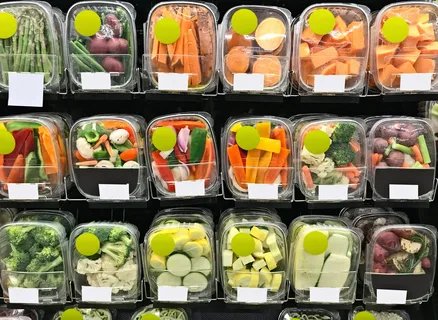The global packaged food market has witnessed significant growth over the years, driven by changing consumer lifestyles, increasing demand for convenience, and advancements in food packaging technologies. In 2022, the market was valued at USD 2730 billion and is projected to reach USD 4573 billion by 2031, growing at a compound annual growth rate (CAGR) of 5.9% during the forecast period (2023–2031). This article delves into the market dynamics, segmentation, regional insights, and key players shaping the future of the packaged food industry.
Market Scope and Research Methodology
The packaged food market encompasses a wide range of products, including breakfast cereals, baby products, snacks, beverages, bakery items, dairy products, sauces, and dressings. These products are packaged in various forms such as boxes, plastic bottles, tin cans, and other materials to ensure convenience, hygiene, and extended shelf life. The research methodology for analyzing this market involves a combination of primary and secondary research. Primary research includes interviews with industry experts, while secondary research involves studying industry reports, company publications, and market trends. The data is then analyzed to provide a comprehensive understanding of market dynamics, growth drivers, challenges, and opportunities.
Get Free Sample Report for Detailed Market Insights : https://straitsresearch.com/report/packaged-food-market/request-sample
Market Dynamics
The growth of the packaged food market is fueled by several factors. One of the primary drivers is the increasing awareness of food hygiene and safety. Consumers are becoming more conscious of the importance of consuming hygienic food, which has led to a surge in demand for packaged products that offer contamination protection and extended shelf life. Additionally, the convenience of packaged foods is a significant factor. These products are easy to store, transport, and consume, making them ideal for busy lifestyles. The packaging also ensures that the food remains tamper-proof, maintaining its quality and safety.
Segmentation
By Packaging (2019-2031)
- Jugs
- Packets
- Bottles
- Bags
- Bowls
- Boxes
- Cans
- Cartons
- Crates
By Distribution Channel (2019-2031)
- Supermarkets/Hypermarkets
- Specialty Stores
- Convenience Stores
- Online/e-Retail
- Others
Read Full Report : https://straitsresearch.com/report/packaged-food-market
Regional Insights
Europe
Europe is the largest market for packaged foods, accounting for a significant share of the global market. The region is expected to grow at a CAGR of 5.2% during the forecast period. Countries like the UK, Germany, France, Italy, and Spain are key contributors to this growth. The rise in household disposable income and changing consumer preferences towards packaged foods are driving market expansion. Additionally, stringent health and safety regulations in countries like Spain are boosting consumer confidence in packaged food products.
North America
North America is the fastest-growing market, projected to grow at a CAGR of 6.5%. The U.S. and Canada are the major markets in this region. The increasing demand for plant-based products, driven by the growing vegan population, is a key growth driver. Companies like Danone, Nestlé, and Unilever are capitalizing on this trend by introducing innovative plant-based alternatives. The U.S. market is also witnessing a surge in demand for functional and sports beverages, catering to health-conscious consumers.
Key Players
- New World Pasta
- Kellogg Co
- Frito-Lay North America Inc
- ConAgra foods Inc
- Smithfield Food Inc
- Cloetta Fazer AB
- Haribo GmbH & Co KG
- General Mills Inc
- Perfetti Van Melle Group
- JBS
Conclusion
The global packaged food market is poised for substantial growth, driven by factors such as increasing health awareness, convenience, and technological advancements. However, challenges related to packaging waste and health concerns associated with preservatives need to be addressed. With continuous innovation and a focus on sustainability, the market is expected to offer lucrative opportunities for both existing players and new entrants. As consumer preferences continue to evolve, companies that can adapt to these changes and offer high-quality, convenient, and sustainable products will thrive in the competitive landscape.









